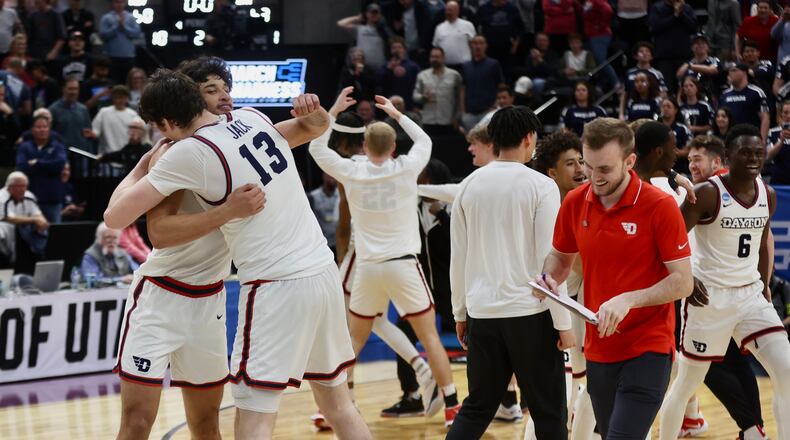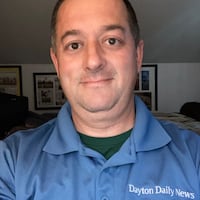Wabler made that comment just before he announced his retirement in July 2015. Neil Sullivan took over as AD that September.
This story is free
We've opened this story as free to help you experience the important and entertaining journalism we're producing. Here are some ways you can follow our work:
- • READ: Massive, vacant Trotwood shopping center sold for $1.2M; renovation planned
- • READ: Developer pulls Yellow Springs affordable housing proposal following delays, backlash
- • SIGN UP: Get the news of the day delivered to your inbox every morning with our free Morning Briefing newsletter.
- • SUBSCRIBE: Like what you see? Explore all special offers here
Just as Wabler predicted, change has come to the NCAA — slowly but surely and then quickly. Everyone’s still waiting to see how it all plays out, and it may take many more years to assess the impact of the changes.
The biggest change — schools paying athletes directly for participating in sports — is coming soon. On May 23, the NCAA and the five biggest conferences agreed to pay $2.77 billion to settle antitrust claims. Had the NCAA not settled, NCAA President Charlie Baker told member schools the NCAA could have been hit with a $9 billion judgment that would have been “financially devastating and unsustainable.”
While the settlement still has to be approved by a federal judge, it means more than 14,000 current and former athletes will earn a share of the settlement. The money will be paid over a 10-year period.
For former athletes, the payout will be back-pay for income they could have earned if they had the right during their careers to profit off the use of their name, image and likeness. The NCAA didn’t grant athletes those rights until July 2021.
The settlement also means current and future athletes will soon get a piece of the revenue colleges earn from TV deals, ticket sales, etc. The current proposal calls for 22% of revenue, or more than $1 billion, be distributed to athletes on an annual basis.
“It’s the most fundamental, transformative change in college sports history,” Sullivan said Wednesday. “I’m not naive. I recognize that the federal lawsuits and government inquiries have said, ‘The model must radically change and the system we have now is broken. The status quo is not an option.’ I think this settlement is indicative of that. It’s as significant as anything we’ve ever dealt with.”
The NCAA released a statement after the announcement of the settlement. Baker along with the commissioners of the Atlantic Coast Conference, the Big Ten, Big 12, Pac-12 and Southeastern Conference signed the statement, which read:
“The five autonomy conferences and the NCAA agreeing to settlement terms is an important step in the continuing reform of college sports that will provide benefits to student-athletes and provide clarity in college athletics across all divisions for years to come. This settlement is also a road map for college sports leaders and Congress to ensure this uniquely American institution can continue to provide unmatched opportunity for millions of students. All of Division I made today’s progress possible, and we all have work to do to implement the terms of the agreement as the legal process continues. We look forward to working with our various student-athlete leadership groups to write the next chapter of college sports.”
For Dayton and every other school, the next chapter comes with many question marks.
“We’ve not been given yet the formal settlement agreement, the actual document where we can assess all the risks and opportunities,” Sullivan said. “We have enough information to look at the big picture. In short, there’s just under about $3 billion in damages that will be paid back toward a certain class of college athletes, and moving forward, the settlement proposal eliminates rules that prevent direct payments from schools.”
The changes will take effect for the 2025-26 school year.
“It’s one thing to settle on paper or in a mediation room,” Sullivan said, “but it’s another to execute it on campus. Execution is the scoreboard, not the term sheet, not the mediation room. Execution is the responsibility that will make or break us as a business. So I think a lot of details still have to be worked out.”
The revenue sharing that is coming could lead to athletes signing multi-year contracts with schools. Dayton’s basketball team lost five players to the transfer portal this spring and gained three players from the portal. That’s the norm these days with unrestricted movement and no penalties for transferring.
“I know that’s been talked about a lot,” Sullivan said, “but I think the reality is there is a lot to be said for long-term commitments on both sides to add some stability to a really unstable environment. I think both parties would have to agree to that. I don’t see (the athletes) wanting to lock in long-term deals necessarily as they’ve been the side that’s really pushed for the ability to move freely. How those two things collide would be anybody’s guess.”
Sullivan also talked about how the settlement and the new era of paying athletes will affect Dayton 6th, the NIL collective that works with UD athletes.
“Dayton 6th has been the most important initiative that we’ve had,” Sullivan said, “and in the short term, it is still the singular most important thing that supports our basketball program. We cannot take our foot off the gas on anything related to Dayton 6th yet. I do think it will evolve with revenue sharing and direct payments from schools. I see schools still having agencies and collectives to deal with what was intended to be real NIL in the first place, whether that be car deals, commercials, just what you see in pro sports. You see pro players in markets and their team is paying them obviously, but then they are doing endorsements in the area.”
According to reports, the NCAA will cover close to $1.2 billion of the $2.77 billion settlement, or 41%. According to a memo Baker sent to NCAA members, that would be covered by “careful expense management, new revenue initiatives and the use of reserves.”
The five biggest conferences would be responsible for 24%. Other FBS schools, the so-called Group of 5, which includes the Mid-American Conference, would cover 10%. FCS schools would pay 13%. Non-football conferences such as the Atlantic 10 Conference, where Dayton plays, would pay 12%, or $34 million annually.
Some reports estimate a school like Dayton would have to pay $2 million over the next 10 years toward the settlement. In the meantime, UD will have to figure out how much to pay current athletes, starting in the 2025-26 academic year.
“It’s a permissive opportunity,” Sullivan said. “You’re not required to pay the players, but you can. But I think we all recognize that if we want the opportunity to have our basketball programs be what they are the market will require us to participate in that and we’ll end up having to do it.”
About the Author

